Michelangelo’s Hidden Secrets Under The Medici Chapel
Ellen Lloyd - AncientPages.com - The European Renaissance period spanned between the 14th and 17th centuries. It was a fascinating moment in the history of the European continent. Western civilization was transformed, and great artists were born, but there were also frequent struggles between the Catholic Church, artists, scientists, kings, queens, and those with power and money.
Left: The dome of the Cappella dei Principi dominates the San Lorenzo architectural complex. Credit: Public Domain; Right: Portrait of Michelangelo by Daniele da Volterra. Credit: Public Domain
Being a talented artist had its advantages and disadvantages. One man whose works were praised on some occasions, only to be questioned later, was the great painter Michelangelo (1475 – 1564).
Famous for his beautiful frescoes, Michelangelo painted the Sistine Chapel’s ceiling between 1508 and 1512. This Renaissance masterpiece is one of Michelangelo's most famous works. Some researchers who studied this work of art suggest Michelangelo was hiding secret messages in the ceiling of the Sistine Chapel.
Michelangelo was also said to have inserted hidden Pagan symbols associated with female anatomy in his famous Medici Chapel work.
The Medici were powerful Renaissance Godfathers, patrons of the Church, and many artists. Being a very rich family, they obtained control over much of Florence. During their time, there was a vague distinction between science and magic. Many famous scientists were very interested in the occult, and the Church was annoyed.
The Catholic Church was constantly questioned and struggled to remain powerful. Although the Medici family were patrons of the famous Galileo Galilei, they could not protect him from being arrested.
Catherine de Medici shared her family’s great love for art. She was also interested in astronomy, astrology, architecture and there were rumors she was fascinated with occult knowledge. She was a great supporter of Nostradamus (1503 – 1566). As a devout Catholic, Nostradamus drew heavily on Biblical allusions and prophecies. Nostradamus maintained a good relationship with the Church, but Michelangelo was not so lucky.
The Medici Chapel in Florence, Italy, where Michelangelo worked on the New Sacristy upon the request of Cardinal Giulio de Medici, the future Pope Clemens VII, was intended to serve as a mausoleum for the Medici family.
Only much later did we discover that the building also became a hiding place for some of his works.
In 1529, Michelangelo joined many inhabitants in Florence who had grown tired of the dominant Medici family and the Pope. Questioning the Church and the Medici family, who Michelangelo depended on as an artist, was not wise. Still, he was hoping for a more democratic system of governance.
Pope Clement VII, who was a Medici, was displeased with Michelangelo, who at the time was working to help fortify the city walls against Medici-friendly forces led by the Pope himself. It took ten months for the Pope and the Medici family to win the battle against their enemies, who were punished immediately. When the Florentine Republic fell in August, the troops were told to arrest Michelangelo and lock him in the Bargello, then the city prison.
Three months before the end of the conflict, Michelangelo managed to find a hiding place so he was never punished for his uprising against the Italian authorities.
A 19th-century photograph of the interior of the Cappella dei Principi - Credit: Public Domain
In November 1530, the Pope and the Medici family announced Michelangelo could return and finish his work on the Chapel. They promised he wouldn’t be punished. Michelangelo emerged from his hiding place and was once again on good terms with the Medici family.
But where had he been hiding all those months? Michelangelo’s hiding place had remained a secret for almost 500 years. Most thought the great artist sought refuge in a church tower or stayed with a friend.
However, this was not the case. Ironically, Michelangelo decided to hide where no one expected to find him; in the Medici Chapel!
In 1976 the director of the Museum of the Medici Chapel discovered a very small secret room where the walls were covered with 180 unknown sketches.
It soon became clear that Michelangelo, one of the greatest Renaissance artists, spent three months sitting in the darkness with nothing to do except create sketches using charcoal and sienna red crayon.
Many of Michelangelo’s drawings are larger than life-size.
The room where Michelangelo spent his three months is today rarely opened. Occasionally it's possible to visit it but keep in mind the place is so small that only 12 people are allowed in every half hour.
Updated on April 8, 2023
Written by Ellen Lloyd – AncientPages.com
Copyright © AncientPages.com All rights reserved. This material may not be published, broadcast, rewritten or redistributed in whole or part without the express written permission of AncientPages.com
Expand for referencesMore From Ancient Pages
-
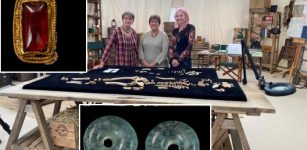 More Anglo-Saxon Burials And Artifacts Found In Lincolnshire, UK
Archaeology | Jan 11, 2024
More Anglo-Saxon Burials And Artifacts Found In Lincolnshire, UK
Archaeology | Jan 11, 2024 -
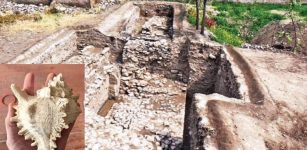 Second Gate Of Bazira And Unique Artifacts Discovered In The Ancient City Of Alexander The Great
Archaeology | Mar 29, 2022
Second Gate Of Bazira And Unique Artifacts Discovered In The Ancient City Of Alexander The Great
Archaeology | Mar 29, 2022 -
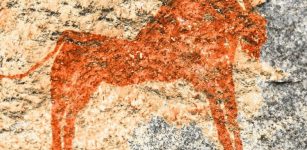 Great research of Polish archaeologist working at rock art site in Kondoa, Tanzania
News | Aug 26, 2015
Great research of Polish archaeologist working at rock art site in Kondoa, Tanzania
News | Aug 26, 2015 -
 Mysterious Ancient European Civilization – Puzzling Ancient Egyptian Connection – Part 2
Civilizations | Oct 23, 2019
Mysterious Ancient European Civilization – Puzzling Ancient Egyptian Connection – Part 2
Civilizations | Oct 23, 2019 -
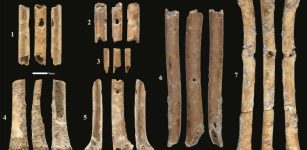 12,000-Year-Old Flutes Made From Bird Bones – Discovered
Archaeology | Jun 10, 2023
12,000-Year-Old Flutes Made From Bird Bones – Discovered
Archaeology | Jun 10, 2023 -
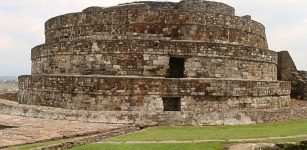 Ehecatl: The Snake-Bird Deity And God Of Wind Feared And Respected By The Aztecs
Aztec Mythology | Aug 26, 2016
Ehecatl: The Snake-Bird Deity And God Of Wind Feared And Respected By The Aztecs
Aztec Mythology | Aug 26, 2016 -
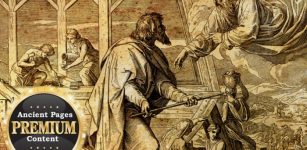 Mystery Of Biblical Noah’s Strange Connection With Red-Skinned Giants And The Watchers – Celestial Secrets – Part 2
Biblical Mysteries | Jan 28, 2021
Mystery Of Biblical Noah’s Strange Connection With Red-Skinned Giants And The Watchers – Celestial Secrets – Part 2
Biblical Mysteries | Jan 28, 2021 -
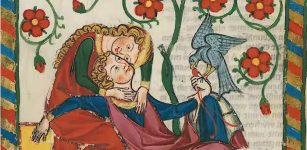 Valentine’s Day’s Connection With Love Was Probably Invented By Chaucer And Other 14th-Century Poets
Ancient Traditions And Customs | Feb 14, 2023
Valentine’s Day’s Connection With Love Was Probably Invented By Chaucer And Other 14th-Century Poets
Ancient Traditions And Customs | Feb 14, 2023 -
 Unravelling The Mystery Of Apollonius Of Tyana – Was He A Superhuman?
Featured Stories | Sep 17, 2015
Unravelling The Mystery Of Apollonius Of Tyana – Was He A Superhuman?
Featured Stories | Sep 17, 2015 -
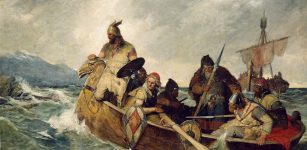 Evidence Scots And Irish Settled Iceland A Century Before The Vikings?
Featured Stories | Jan 7, 2023
Evidence Scots And Irish Settled Iceland A Century Before The Vikings?
Featured Stories | Jan 7, 2023 -
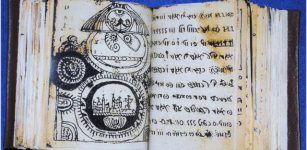 Rohonczi Codex Still Undeciphered – Is It The Most Secret Book Written In A Code?
Artifacts | May 30, 2014
Rohonczi Codex Still Undeciphered – Is It The Most Secret Book Written In A Code?
Artifacts | May 30, 2014 -
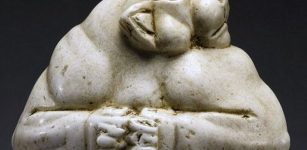 Amazing ‘Guennol Lioness’ – One Of The Greatest Ancient Works Of Art Of All Time
Artifacts | Sep 6, 2018
Amazing ‘Guennol Lioness’ – One Of The Greatest Ancient Works Of Art Of All Time
Artifacts | Sep 6, 2018 -
 Tomb Of God Thoth’s High Priest Discovered In Ancient Egyptian Necropolis
Archaeology | Feb 27, 2018
Tomb Of God Thoth’s High Priest Discovered In Ancient Egyptian Necropolis
Archaeology | Feb 27, 2018 -
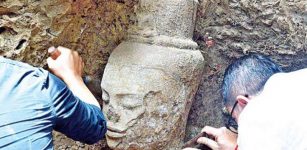 Sandstone Head Of A Bodhisattva Discovered Near Ta Nei Temple
Archaeology | Oct 15, 2019
Sandstone Head Of A Bodhisattva Discovered Near Ta Nei Temple
Archaeology | Oct 15, 2019 -
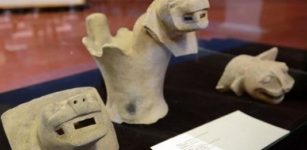 Lake Titicaca Reveals More Ancient Underwater Secrets
Archaeology | Oct 11, 2013
Lake Titicaca Reveals More Ancient Underwater Secrets
Archaeology | Oct 11, 2013 -
 2,000 Year-Old Books Written By Bian Que The Divine Healer Unearthed
Artifacts | May 13, 2014
2,000 Year-Old Books Written By Bian Que The Divine Healer Unearthed
Artifacts | May 13, 2014 -
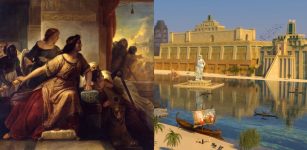 Mystery Of Queen Semiramis: Famous And Powerful Ancient Ruler And Warrior Queen
Featured Stories | Feb 15, 2018
Mystery Of Queen Semiramis: Famous And Powerful Ancient Ruler And Warrior Queen
Featured Stories | Feb 15, 2018 -
 Focus On Turkana Boy: Modern Human Body Evolved More Recently Than Once Believed
Archaeology | Jul 8, 2020
Focus On Turkana Boy: Modern Human Body Evolved More Recently Than Once Believed
Archaeology | Jul 8, 2020 -
 Mystery Of The Ancient Moonless Ones – Strange Tales Of Unusual Lost Civilizations
Featured Stories | Jan 29, 2022
Mystery Of The Ancient Moonless Ones – Strange Tales Of Unusual Lost Civilizations
Featured Stories | Jan 29, 2022 -
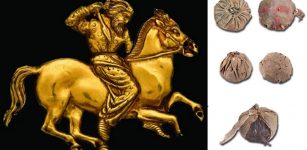 Eurasian Horse Riders Played Ball Games 3,000 Years Ago – Leather Balls Found In Graves Reveal
Archaeology | Oct 12, 2020
Eurasian Horse Riders Played Ball Games 3,000 Years Ago – Leather Balls Found In Graves Reveal
Archaeology | Oct 12, 2020


